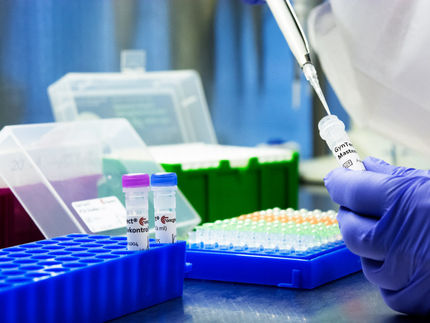Moffitt researchers analyze HPV vaccination disparities among girls from low-income families
Pediatricians and private practice physicians have higher vaccination rates; Doctors practicing in multi-specialty settings less likely to vaccinate
Researchers at Moffitt Cancer Center and colleagues at the University of Florida studied health care providers to determine the factors associated with disparities in Human Papillomavirus (HPV) vaccination among girls, ages 9 to 17, from low-income families. They found that physician vaccination strategies and the type of practice play a role in whether or not girls were vaccinated. The study results were published in the magazine Cancer.
"The HPV vaccine has made cervical cancer preventable. However, low-income and minority women still experience a higher number of deaths from the disease," said Susan T. Vadaparampil, Ph.D., M.P.H., member of the Health Outcomes and Behavior Program at Moffitt. "There are no-cost HPV vaccination programs available, such as the Vaccines for Children program, to help, but we still find low-income and minority females are less likely to receive the vaccination series."
The HPV vaccine has been recommended for females ages 11 to 26 since 2006. Despite the availability of the vaccine, more than 12,700 women were diagnosed with cervical cancer and 4,290 died from the disease in 2011. As a result, the federal government has included the reduction of HPV infection rates and an increase in HPV vaccination rates in its Healthy People 2020 program.
In order to assess the factors associated with low HPV vaccine rates, the researchers surveyed a random sample of 800 Florida health care providers from the Medicaid Master Provider File. The researchers mailed the providers a 27-item survey that evaluated the characteristics of their practice, their HPV information and knowledge, possible barriers to HPV vaccination, and their vaccine recommendation and strategy practices.
The researchers found that:
- Family physicians had a lower patient HPV vaccination prevalence than pediatricians.
- Physicians in multi-specialty practice were less likely to vaccinate than those in single specialty practice.
- Providers using two or more strategies to ensure HPV vaccination were more likely to vaccinate than those with no strategies.
The researchers also found that providers of the no-cost Vaccine for Children program were more likely to vaccinate than those who did not participate in the program. Also, physicians who reported caring for minority groups had higher vaccination averages than those caring for non-minorities.
"This research helps us identify key ways in which we can target future provider interventions," Vadaparampil said. "Our next steps will be to develop interventions that target the providers and settings where vaccination rates were lowest."
Given that black and Hispanic women have higher rates of cervical cancer when compared to their white counterparts, these physicians may be more sensitized to the importance of vaccination against cervical cancer, said the researchers.
The finding they called "interesting" was that vaccination rates were relatively low in light of a patient's eligibility for free vaccination through the Vaccine for Children program. Other factors may have impeded vaccination, they suggested, such as disruption of provider vaccination supply or patient refusal.
"Since all patients of all physicians surveyed were eligible for free vaccination due to their participation in the Florida Medicaid program, our findings suggest that cost may not be the only barrier to vaccination," explained Teri Malo, Ph.D., M.P.H., applied research scientist in the Health Outcomes and Behavior Program at Moffitt.
"Our findings suggest that HPV vaccination disparities among low-income females, even in the absence of cost, require targeted intervention to increase vaccination rates among underserved populations," concluded the researchers. The intervention may focus on family physicians and specialty physicians who practice in non-private and multi-specialty settings who see primarily non-Hispanic white patients and use no strategies to ensure vaccination completion.






















































